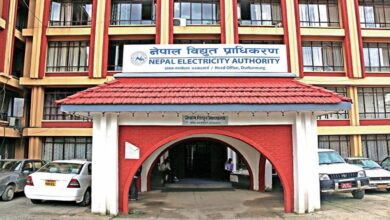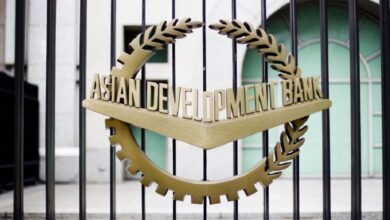Indian travellers can now scan and pay in Nepal
A reciprocal payment service for Nepalis visiting India has been delayed for unspecified reasons.

By Sangam Prasain & Krishana Prasain
Kathmandu : Indian tourists visiting Nepal were able to pay for the services through their mobile phones on Wednesday, for the first time since the ban on high-denomination Indian currency notes eight years ago.
This marks a milestone in cross-border digital payment between Nepal and India and is expected to give a much-needed boost to the country’s tourism.
Khalti reported that on the first day, they recorded more than 100 transactions.
“The highest single transaction we recorded on Wednesday, the first day, amounted to Rs9,000 through the QR-based cross-border payment system,” said Binay Khadka, the CEO of Khalti, a digital wallet for instant online payments in Nepal.
“We expect daily transactions to increase in the coming days.”
The cross-border digital payment service was put on trial at the start of the week. The formal announcement for the commercial operation was made on Wednesday.
The reciprocal service for Nepali citizens in India, however, has been delayed for unknown reasons.
Sources said Nepal’s central bank has recently formed a committee to study the transaction limits through digital wallets for Nepalis travelling to India.
The private sector, particularly, travel trade entrepreneurs has expressed happiness with the digital payment initiative between the two neighbours, which normally see a topsy-turvy relationship.
The new system eliminates hassles associated with currency exchange, eliminates the need to carry physical cash, and ends complexities associated with currency conversion or visiting banks for currency exchange.
For the service in Nepal, two digital wallets, Khalti and Fonepay Payment Service, have partnered with India’s NPCI International Payments to launch the cross-border payment service using quick-response (QR) codes.
“This strategic partnership empowers Indian tourists to seamlessly make transactions in the Nepali market by scanning Khalti QR code using their preferred digital wallets, such as PhonePe and BHIM UPI,” according to Khalti.
With Khalti’s QR code technology, over 20,000 Nepali merchants can effortlessly accept payments from Indian tourists, enhancing their revenue streams, it said.
The payment services, currently, have been started from the two Indian digital apps.
“As UPI will rope in more apps, it will enable payments through other Indian digital wallets soon,” Khadka said. “This is just the beginning.”
The Post couldn’t independently verify the daily transaction limit for Indian citizens in Nepal.
However, according to NPCI, the UPI transaction limit per day is set at IRs100,000 per person.
Khadka said that as India’s PhonePe and BHIM UPI do not hold funds, payments are processed through banks. “So, the daily transactions are decided at the bank’s end.”
But the progress from Nepal’s side is disappointing.
“For the first time, payment through QR code has been allowed for Indians travelling to Nepal,” said Gunakar Bhatta, executive director at the Payment Systems Department of Nepal Rastra Bank, the country’s central bank.
“We, however, are doing a study to set a daily payment limit for Nepalis in India through QR codes.”
Sources, however, said that the delay on Nepal’s part shows the central bank’s lax approach as it has been nearly a year since both countries started working to introduce the cross-border digital payment system.
But the launch of Nepal’s digital payment system in India anytime soon is uncertain, the source said.
On June 1 last year, Nepal and India signed a memorandum of understanding for cross-border digital payment to ease digital transactions for business people, students, and tourists from both countries.
Hundreds of thousands of Nepalis travel to India annually for medical and study purposes and have been facing hassles with currency conversion as they have to go to banks or pay big commissions to money exchanges at border points. For Nepalis holding debit cards, the transaction fee to withdraw from Indian banks is expensive.
Bhatta, however, said that it is uncertain when Nepal will launch its digital payment system in India. “There is no fixed date. But as soon as the study is completed, based on the recommendation, we will launch the digital payment system in India,” said Bhatta.
Since the ban on high-denomination Indian currency notes, Indian tourists have been facing difficulties paying for services in Nepal as they are allowed to carry notes of up to Rs100 denomination. Debit card usage is limited to mostly urban areas in Nepal.
The Indian government, in a surprise move on November 8, 2016, pulled INR500 and INR1,000 out of circulation “to unearth unaccounted wealth and fight corruption”.
As a tit-for-tat policy, Nepal’s central bank, subsequently, banned all Indian notes above INR100 in Nepal. The 2,000 rupee note introduced by the Reserve Bank of India on November 8, 2016, too, was banned.
The Reserve Bank of India, in February 2015, introduced the Foreign Exchange Management (export and import of currency) Regulations, allowing Nepali and Bhutanese citizens to “carry Reserve Bank of India currency notes of denominations INR500 and/or INR1,000 up to a limit of INR25,000”.
“The cross-border digital payment service is good news for the tourism industry,” said Binayak Shah, president of the Hotel Association Nepal. “We all know how Indian tourists are facing hassles over payments in Nepal despite being the citizens of a close neighbour,” he said.
“The credit card is not accessible in most of Nepal’s locality. As the QR system has reached almost all areas, this will greatly facilitate tourists.”
He said the government should also introduce a payment system in US dollars to pep up tourism.
Travel trade entrepreneurs said Nepal wants to host 2 million tourists annually and boost the economy through their spending, but on the other hand, it has set limits to bring money.
Nepal welcomed 1 million tourists in 2023 following record arrivals from India.
For the first time, Nepal received over 315,000 Indian tourists last year, who came to Nepal by air. Indian tourists coming via land routes are not taken into account as tourists and therefore no records are kept.
However, a survey of overland Indian visitors conducted by Nepal Tourism Board in 2017 shows more than 1.2 million Indians came to Nepal by land. The survey showed that the average length of stay of Indian tourists coming overland was 5.8 days. The average expenditure per visitor was Rs11,310.
On February 15 this year, the Nepal Rastra Bank and Reserve Bank of India signed and exchanged Terms of Reference for interlinking the Unified Payment Interface (UPI) of India and the National Payment Interface of Nepal.
The integration is aimed at facilitating cross-border remittances between India and Nepal by enabling users of the two systems to make instant, low-cost fund transfers.
Khalti said it is optimistic that “within a few days, Nepali citizens will also be able to make payments in Indian markets by scanning QR codes through their Khalti wallets.”
Sangam Prasain
Sangam Prasain is Business Editor at The Kathmandu Post, covering tourism, agriculture, mountaineering, aviation, infrastructure and other economic affairs. He joined The Kathmandu Post in October 2009.
Krishana Prasain
Krishana Prasain is a business reporter for The Kathmandu Post covering markets. Before joining The Kathmandu Post in 2018, she spent 3 years in New Business Age magazine covering business.




